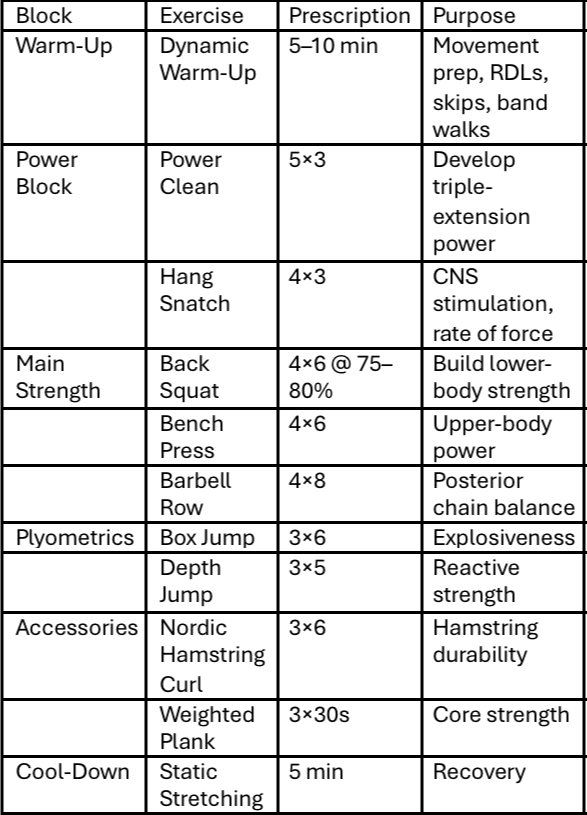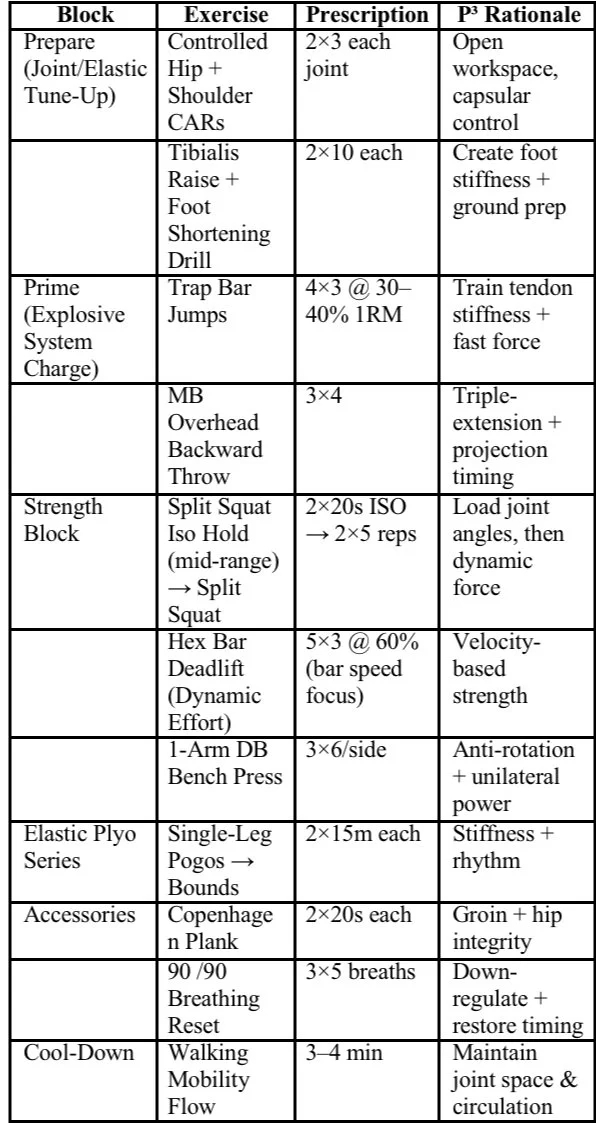What Is the P³ Method?
A performance system engineered to optimize how the body prepares, primes, and projects for speed.
The P³ Method is built on the belief that speed is a system—not a drill.
It fuses fascia science, joint control, and CNS programming to create athletes who don’t just move fast—they move efficiently, reflexively, and elastically.
Created by Angelo “Coach Lo” Ennis, P³ is the first athlete development method in Palm Beach County that merges modern sports science with swagger.
The Core Pillars
🔨Prepare
Establish joint mobility, trunk stiffness, and fascia readiness. This is where pre-movement coordination begins
🧠Prime
Activate CNS reflex loops, timing circuits, and fascia elasticity. This is where athletic reactivity is built
⚡️Project
Sprint/sport mechanics, projection, posture, and output. This is where everything expresses itself on the field or track
Key Comparison
• Traditional: Barbell-heavy + Olympic lifts → power is developed but CNS may be overloaded.
• P³: Builds joint prerequisites first, then loads only when timing is optimal, prioritizing elastic recoil and bar speed over grind strength.
• End State: Athlete leaves session tuned, fast, and neurologically fresh — not just fatigued.
Key Difference vs. P³
Traditional: Heavy bilateral barbell lifts + Olympic lifts + generic plyos — great for raw power, but often neglects joint health, timing, and fascia-specific stiffness.
P³: Still builds strength and power but begins with joint + nervous system prep, uses specific angles, integrates timing + projection, and selects loads based on speed output, not just % of 1RM.
Traditional Athletic Weight Room Session
Goal: Maximize power output and strength through heavy lifting and explosive work.
P³ Weight Room Session
Goal: Tune the system, build joint capacity, stiffness, and speed before adding load.
FASCIA
Superficial Back Line
Joint Hubs
Load Transfer Zones
Postural Base
CNS
Cortical Control (Planning)
Subcortical Loops (Automation)
Spinal Reflex Arc (Speed)
🟡 PREPARE
We build the body’s internal architecture:
Joint mobility
Fascia readiness
Trunk stiffness
This isn’t just mobility—it’s power waiting to fire.
🔵 PRIME
We wire the nervous system for speed:
Reflex loops
Timing circuits
Elastic coordination
This is where reactivity becomes instinct.
🔴 PROJECT
We release it all into performance:
Sprint mechanics
Posture and projection
Speed-specific output
This is where athletes separate from average.
Why P³ Outperforms Traditional Training
The P³ Method isn’t a workout.
It’s a system built to make you dangerous.
We don’t train tired—we train tuned.
Fascia, nervous system, and elastic timing—all engineered to make your body fire fast, move sharp, and dominate your sport.
If you’re still chasing speed with random drills, you’re already behind.
Traditional workouts overload the body with fatigue and random drills.
P³ builds athletes from the inside-out:
Joint first, then muscle
System first, then strength
Timing first, then load
“You don’t get fast by doing more—you get fast by moving better.”

